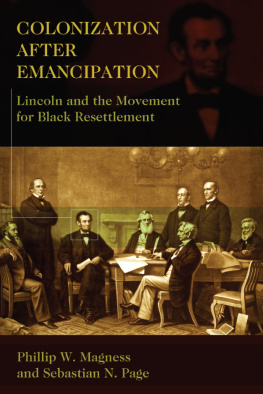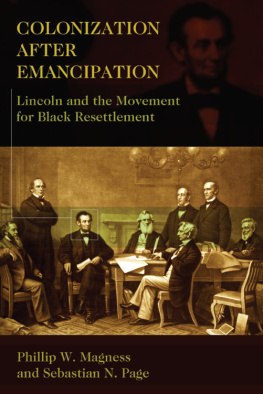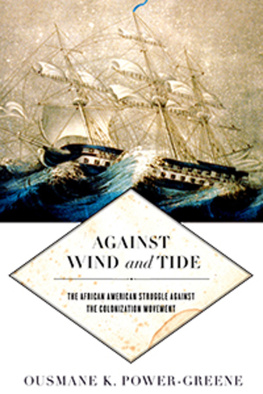Beverly C. Tomek - Colonization and Its Discontents: Emancipation, Emigration, and Antislavery in Antebellum Pennsylvania
Here you can read online Beverly C. Tomek - Colonization and Its Discontents: Emancipation, Emigration, and Antislavery in Antebellum Pennsylvania full text of the book (entire story) in english for free. Download pdf and epub, get meaning, cover and reviews about this ebook. year: 2012, publisher: NYU Press, genre: Politics. Description of the work, (preface) as well as reviews are available. Best literature library LitArk.com created for fans of good reading and offers a wide selection of genres:
Romance novel
Science fiction
Adventure
Detective
Science
History
Home and family
Prose
Art
Politics
Computer
Non-fiction
Religion
Business
Children
Humor
Choose a favorite category and find really read worthwhile books. Enjoy immersion in the world of imagination, feel the emotions of the characters or learn something new for yourself, make an fascinating discovery.

- Book:Colonization and Its Discontents: Emancipation, Emigration, and Antislavery in Antebellum Pennsylvania
- Author:
- Publisher:NYU Press
- Genre:
- Year:2012
- Rating:5 / 5
- Favourites:Add to favourites
- Your mark:
Colonization and Its Discontents: Emancipation, Emigration, and Antislavery in Antebellum Pennsylvania: summary, description and annotation
We offer to read an annotation, description, summary or preface (depends on what the author of the book "Colonization and Its Discontents: Emancipation, Emigration, and Antislavery in Antebellum Pennsylvania" wrote himself). If you haven't found the necessary information about the book — write in the comments, we will try to find it.
Pennsylvania contained the largest concentration of early Americas abolitionist leaders and organizations, making it a necessary and illustrative stage from which to understand how national conversations about the place of free blacks in early America originated and evolved, and, importantly, the role that colonizationsupporting the emigration of free and emancipated blacks to Africaplayed in national and international antislavery movements. Beverly C. Tomeks meticulous exploration of the archives of the American Colonization Society, Pennsylvanias abolitionist societies, and colonizationist leaders (both black and white) enables her to boldly and innovatively demonstrate that, in Philadelphia at least, the American Colonization Society often worked closely with other antislavery groups to further the goals of the abolitionist movement.
In Colonization and Its Discontents, Tomek brings a much-needed examination of the complexity of the colonization movement by describing in depth the difference between those who supported colonization for political and social reasons and those who supported it for religious and humanitarian reasons. Finally, she puts the black perspective on emigration into the broader picture instead of treating black nationalism as an isolated phenomenon and examines its role in influencing the black abolitionist agenda.
Beverly C. Tomek: author's other books
Who wrote Colonization and Its Discontents: Emancipation, Emigration, and Antislavery in Antebellum Pennsylvania? Find out the surname, the name of the author of the book and a list of all author's works by series.







